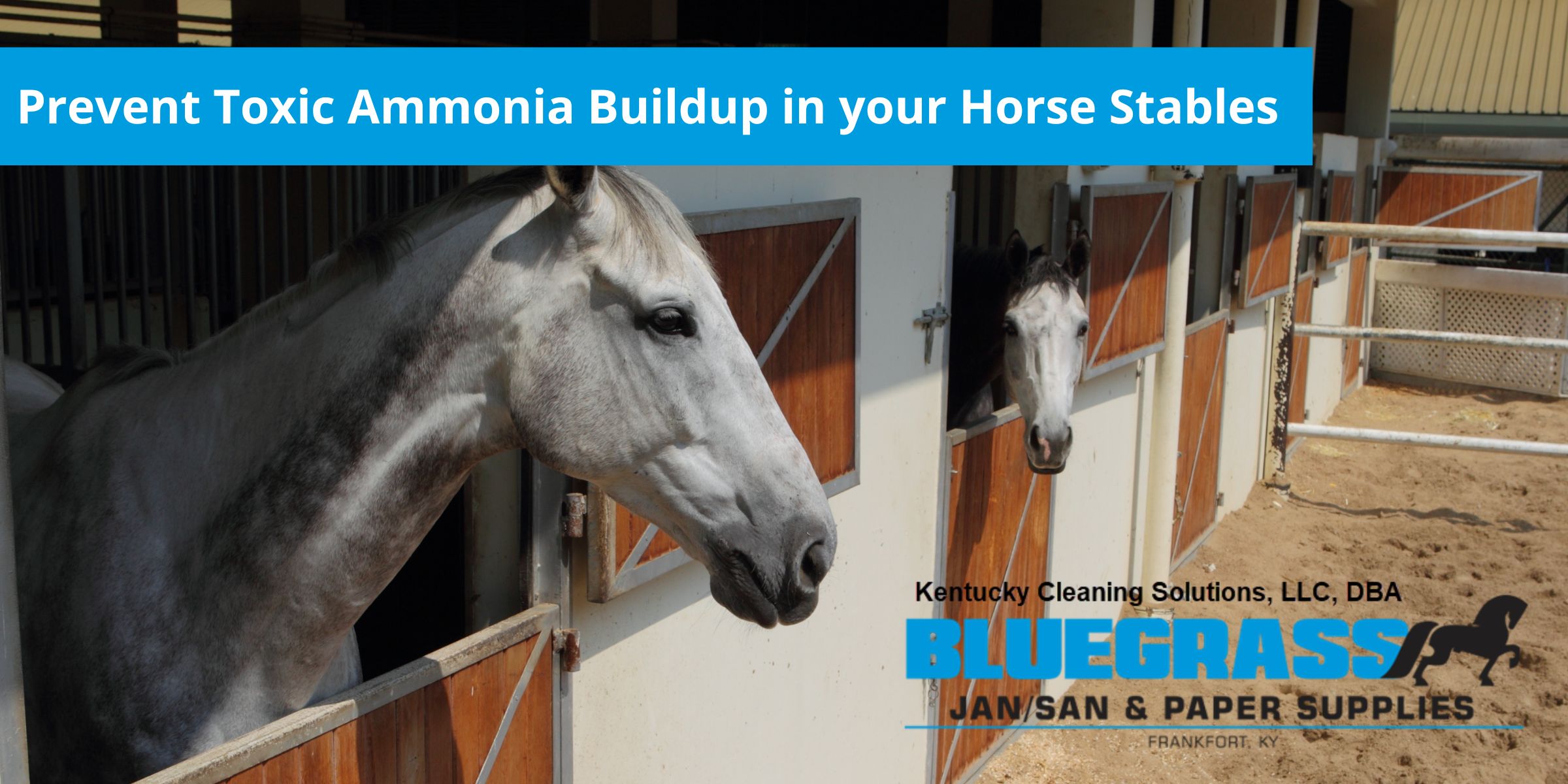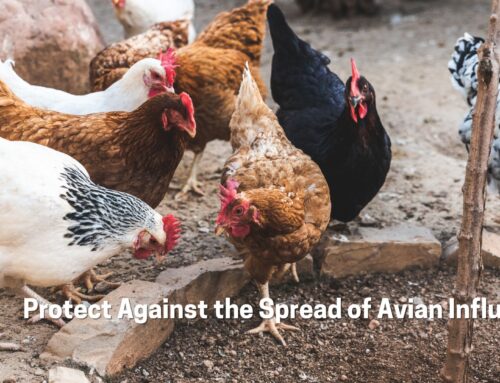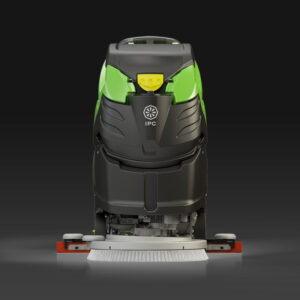Ammonia Can Buildup in Your Horse Stables and Harm Your Animals
Ventilation and regular cleaning of a horse barn is important for sanitation and smell. But most importantly, thorough horse barn cleaning with the proper supplies prevents the buildup of compounds that can pose danger to your animals. One of these such compounds is ammonia (NH3).
How Does Ammonia Buildup to Toxic Levels in a Horse Stall?
Ammonia is naturally occurring in horse urine and manure. Urine and manure seeps through bedding and into the stall’s porous concrete, deep bedding, or stall mats. Bacteria produce ammonia when it processes the compounds in urea, which is then emitted as a gas.
As ammonia builds up in a stall, the compound can accumulate in the air and cause respiratory inflammation and even infection. Even low concentrations can cause nose and throat irritation and coughing with animals and humans.
Studies show that because ammonia rises from the urine and manure on the ground, foals and sick or old horses that spend more time lying down and closer to the floor, will be more susceptible to health issues. According to studies, an estimated 15 percent of all foals have severe respiratory disease before the end of their first year.
Three Tips to Prevent ammonia buildup in your facility
1. Muck out horse stalls regularly
The best way to prevent ammonia build up in your horse stalls is to clean – or muck out – them regularly. This involves using a pitchfork and/or shovel to remove manure and wet, soiled hay or bedding. Make sure the entirety of the wet bedding is removed, which may involve some scraping from the floor. For a quick cleaning, add fresh hay or bedding after the floor is dry. This should be done at least twice a day for typical horse stables.
It is very important to do a thorough cleaning at least once a week, if not more often. In this case, remove both the soiled bedding and dry bedding completely. Use a cleaner that is specifically designed to eliminate ammonia and bacteria on the floor surface of the stalls and allow to sit and absorb. Rinse the cleaner thoroughly and then add fresh bedding back in.
2. Use proper supplies for cleaning horse stalls
Proper cleaning supplies are essential to ensuring that your stalls are properly cleaned, with no bacteria or ammonia left behind. In the animal environment where organic matter can imbed into porous surfaces, a bioenzymatic solution is needed to penetrate deep into the organic waste buildup and stall floor.
We offer an extremely effective bioenzymatic cleaner by ProVetLogic. STABLE Environment Bioenzymatic cleaner is a high performance, bacterial-enriched multi-surface stable cleaner, odor eliminator, organic waste degrader and drain maintainer.
STABLE Environment most effective when applied using a bucket and brush, pump-up sprayer, foam gun, pressure washer or automatic scrubber.
- For Light Duty Cleaning: Dilute 1 to 2 ounces of product per gallon of water, apply to surface, allow to dwell for 3 to 5 minutes and agitate if needed. Rinse thoroughly with clean water.
- For Medium Duty Cleaning: Dilute 3 to 4 ounces of product per gallon of water, apply to surface, allow to dwell for 3 to 5 minutes and agitate if needed. Rinse thoroughly with clean water.
- For Heavy Duty Cleaning: Dilute 6 to 8 ounces of product per gallon of water, apply to surface, allow to dwell for 3 to 5 minutes and agitate if needed. Rinse thoroughly with clean water.
Rinsing is not required when applying STABLE Environment to porous substrates such as wood, stone, sand, soil and grass.
3. Make sure your stall has proper ventilation
Another important tip for preventing ammonia buildup in your horse stable is to ensure that there is proper ventilation. Every stall in the stable should have access to an open window to allow for fresh air to flow in and out. That way, there is less stagnant ammonia in the air when the stall hasn’t been cleaned yet.





